TANABATA
Tanabata (七夕) — also known as the Star Festival, is a Japanese celebration that takes place on July 7. It is based on an ancient Chinese legend about two lovers — Orihime (the weaver star, Vega) and Hikoboshi (the cowherd star, Altair), who are allowed to meet only once a year — on the night of Tanabata, if the Milky Way does not separate them.
Main Elements of Tanabata:
The Legend
Orihime was the daughter of a celestial king and wove beautiful fabrics along the banks of the Heavenly River (the Milky Way). She met and fell in love with the cowherd Hikoboshi. After their marriage, they neglected their duties, so Orihime’s father separated them, allowing them to meet only once a year — from the night of July 6 to the morning of July 7.
Tanzaku (短冊)
The main symbol of the festival is colorful paper strips, on which people write wishes, poems, or dreams, then hang them on bamboo branches. Bamboo is considered a plant that connects the heavens and the earth.
Decorations
The branches are decorated not only with tanzaku but also with paper figures — such as cranes, nets, kimono, and other origami, each symbolizing something (health, success, love, knowledge).
Celebrations
In cities like Sendai and Hiratsuka, vibrant festivals are held with parades, fireworks, dances, and many decorations. Streets are adorned with paper streamers and lanterns.
Skin Types, How to Identify and Care for Them Properly
Understanding your skin type is essential for choosing the right skincare and cosmetics.
Using the wrong products can lead to irritation, dryness, inflammation, or premature aging. In this article, we’ll explore the main skin types, their characteristics, and how to care for them properly.
Main Skin Types

Normal Skin
Even skin tone
Neither too dry nor too oily
Small, barely visible pores
No flakiness or breakouts
Care Tips:
Normal skin requires gentle maintenance: mild cleansing, light hydration, and sun protection.
Dry Skin
Tightness after cleansing
Flaking, sensitivity
Dull complexion
Fine lines may appear earlier
Care Tips:
Dry skin needs rich, nourishing care: creamy cleansers without alcohol or sulfates, moisturizers and overnight masks.
Sunscreen is essential year-round.
Oily Skin/Combination Skin
Shine, especially in the T-zone
Enlarged pores
Prone to acne and blackheads
Thicker texture
Care Tips:
Use products that regulate oil and fight bacteria.
Lightweight foams.
Avoid over-drying — it can trigger more oil production.
How to Identify Your Skin Type
Try the blotting sheet test:
Clean your face and don’t apply any skincare.
After 2–3 hours, press a blotting paper or tissue onto your skin.
Analyze the results:
Oily all over – oily skin
Oily only in the T-zone – combination skin
No oil, skin feels comfortable – normal skin
Dry tissue, tight feeling – dry skin
Knowing your skin type is the key to healthy, radiant skin!
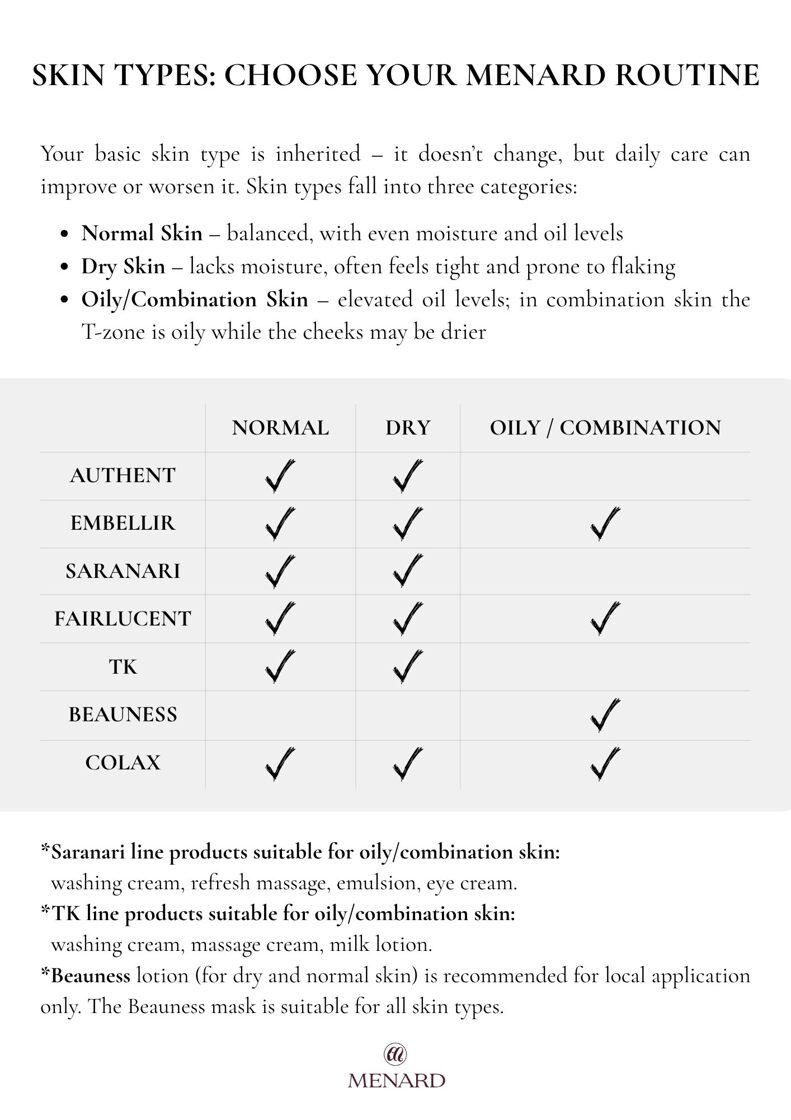
Benefits of Neck and Décolleté Massage
Benefits of Neck and Décolleté Massage
1. Rejuvenating Effect
• Improves blood circulation and lymphatic drainage, promoting skin cell renewal.
• Increases skin tone, reduces sagging, and enhances facial contours.
• Stimulates collagen and elastin production, helping to smooth fine lines.
2. Prevention of Swelling and Lymph Stagnation
• Especially useful for those with a sedentary lifestyle or who work at a computer for long hours.
• Relieves heaviness and puffiness in the collarbone and jawline area.
3. Muscle Relaxation and Tension Relief
• Reduces muscle spasms in the neck and shoulder area.
• Helps alleviate tension-related headaches.
4. Prevention of Double Chin
• Stimulates muscle tone and improves lymph flow, helping to maintain a defined facial contour.
5. Improved Skin Condition
• Leaves skin smoother, firmer, and more radiant.
• Enhances absorption of skincare products.
How Often Should You Get a Massage
• For general care / prevention – 1–2 times per week.
• For visible lifting effect / reducing puffiness – A course of 8–10 sessions, every other day or 2–3 times per week.
• After the course – Once a week for maintenance.
Home massage (using hands, roller, or gua sha):
Suitable for daily or frequent use, especially in the evening routine.


Geshi - Japanese summer solstice
Photo from the website: https://www.kvg-kyoto.com/new-stories/nagoshi-no-harai
Unlike Europe or Scandinavia, the summer solstice is not widely celebrated in Japan, however:
This time is associated with seasonal changes, including in traditional medicine and food.
Some temples and shrines may perform purification rituals, especially in June (for example, the Nagoshi no Harae ritual - 夏越の祓).
People walk in circles of grass (茅の輪 - Chinowa) at temples to cleanse themselves of illness and misfortune.
This is to prepare for the summer heat and to cleanse the soul and body.
In some regions, the following is eaten on this day:
Chuka men (冷やし中華) - cold noodles.
Okra and soybeans, which symbolize strength and coolness.
Tako (octopus) is popular in Kyoto - octopus is believed to improve health and "attract" good luck.
Chinowa
A large ring of twisted hamao grass (ちがや / kogongrass) is installed at the entrance to the shrine
Diameter - up to 2 meters
How to perform the ritual:
The steps are as follows:
1. Turn to the chinowa and bow. Then start walking with your left foot and walk to the left to face the chinowa again
2. Turn to the chinowa again, bow, and begin to pass, but this time with your right foot. Then turn to the right and go around him to face him again.
3. Once again, facing the chinowa, bow and pass through him with your left foot first, as you did the first time. Turn to the left and face the chinowa one last time.
4. Bow to the ring again and walk straight through it (without turning left or right) with your left foot first. Now you can go and pray in the shrine.
Each time you pass through the ring has a special meaning.
The first time is for dispelling evil, the second is for purification, the third is for protection, and the last is for happiness.
So it's best to keep these thoughts in mind every time you go through it.

Making a miniature Chinowa (茅の輪 - Chinowa)
is not only beautiful, but also very symbolic, especially if you want to bring a little Japanese spirit of purification and harmony into your space.
How to make a miniature Chinowa - Japanese purification ring?
Size:
Diameter: 10 to 30 cm
Step-by-step guide...
1. Collect grass
Ideally - long, thin grass stalks
2. Make a rope
Take a bunch of grass and twist it into a knot, adding new stems as you go
Twist it into a spiral so it is strong but flexible
3. Make a ring
Bend the rope into a ring of the desired diameter
Secure the ends with thread or jute
4. Secure the shape
Tie the ring in three or four places to keep it in shape
Optional: Insert a wire or bamboo ring base inside
5. (optional)
Decorate
Small strips of white paper (shide — 紙垂) — zig-zag purification charms
Pendants or wish notes
Where to hang:
At the entrance to the house - "cleans" incoming energy
On the wall or window - as a symbol of protection and harmony
Initiation rite (mini version)
Even with a small ring, you can perform a home ritual:
1. Visualize yourself mentally passing through the ring 3 times
2. Say the phrase:
「身のけがれを祓い給え」
Mi no kegare wo harai tamae
(Cleanse my body from dirt)
Summer care for the décolleté and neck area: the most often forgotten 15 cm of skin

In summer, we generously apply SPF cream to our face, do masks, moisturize our skin, but… we often forget about the neck and décolleté area.
Meanwhile, this is one of the thinnest and most vulnerable areas, where signs of aging, photodamage, and dehydration appear earlier than on the face.
Facts:
• The skin in this area is thinner, with fewer sebaceous glands → loses moisture faster.
• The neck and décolleté area is almost always open in the summer - exposed to UV radiation, dust and heat.
• Due to insufficient care, wrinkles, folds, pigmentation appear, elasticity is lost.
5 Essential Steps to Neck and Décolleté Care in Summer
1. Cleansing is not just for your face
Use gentle cleansers EMBELLIR washing
2. Moisturizing - every day
Apply moisturizer up to the chest area. AUTHENT neck essence
3. Sun protection - SPF
Every morning - apply SPF to the neck and décolleté area. Reapply throughout the day, especially if you are in the sun. FAIRLUCENT day cream SPF 50
4. Neck SPA
Add 1-2 times a week:
• Gentle peeling HERB MASK
• Masks or patches for the neck area AUTHENT MASK
• Light massage of the neck and décolleté area - this increases tone
5. Night ritual of rejuvenation
At night, it is recommended to use products with a richer texture:
Nourishing essences for the décolleté area AUTHENT neck essence
The neck and décolleté area are an extension of the face.Taking care of these areas is especially important in the summer!Shine every day!
Summer skincare basket!
Skin Care

2. Lotion and emulsion with a moisturizing effect
– Refreshes throughout the day, promotes skin regeneration.
Examples: Embellir toner, TK lotion, SARANARI LOTION
3. Double cleansing
– To prevent pores from becoming clogged with SPF products and sweat.
Examples: Embellir Refresh massage + washing cream, Saranari Refresh massage + washing cream, Fairlucent Refresh massage + washing cream, TK cleansing cream + washing cream
4. Scrub (1-2 times a week)
- To prevent pores from becoming clogged with SPF products and sweat.
Makeup (light and long-lasting)
1. Foundation with SPF
– Moisturizing + tone + protection.
2. Waterproof mascara
– To make your eyelashes irresistible in the heat
Examples: Jupier Volume mascara, Jupier Longlash mascara
3. Lip balm
– Moisturizing + protection.
Examples: Jupier lip treatment C (with menthol), Jupier lip treatment N (neutral)
ADD...
- Matifying wipes
Eliminates oily shine without drying out the skin.
- After-sun face mask
Soothes and restores the skin.
Examples: FAIRLUCENT mask, BEAUNESS mask
- Sunscreen hair mist
Protects against fading and dryness.
Examples: Onsensou hair and body mist
We wish you a wonderful and sunny summer!
Reishi mushrooms
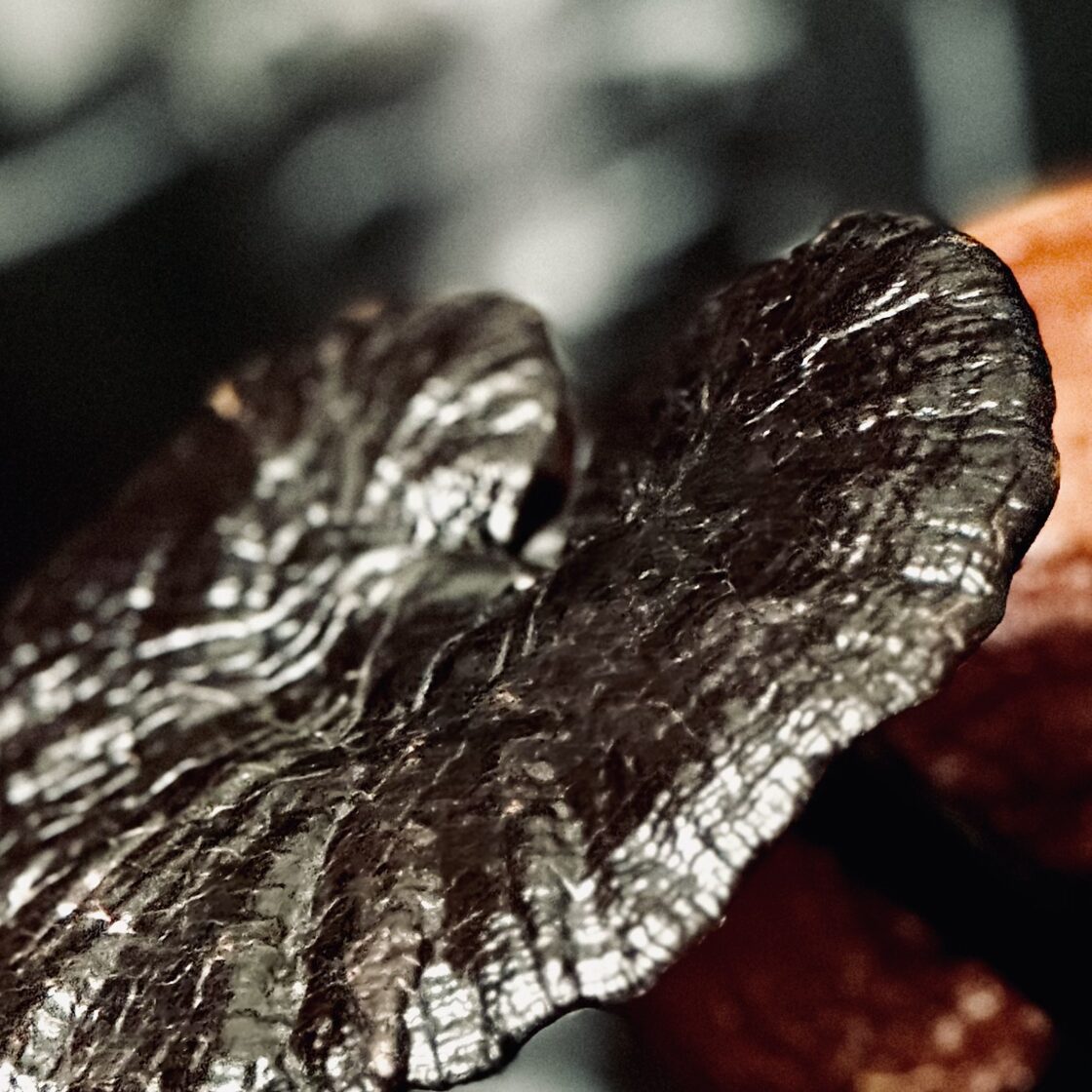
Reishi mushrooms (lat. Ganoderma lucidum, Japanese 霊芝, "reishi") are famous medicinal mushrooms that have long been valued in East Asia for their healing properties.
1. Antioxidant action
Reishi mushrooms are rich in polysaccharides, triterpenoid compounds and beta-glucans, which protect the skin from free radicals and premature aging.
Result: reduced signs of aging, even skin tone, combat dullness.
2. Anti-inflammatory
Reishi reduces inflammation and soothes the skin, making it suitable for sensitive, redness-prone or acne-prone skin.
Result: Reduced irritation, redness and breakouts.
3. Moisturizing and barrier restoration
Beta-glucans in Reishi help retain moisture and strengthen the skin barrier.
Result: moisturized, soft and elastic skin.
4. Lightening and fighting pigmentation
Reishi mushrooms are able to reduce the activity of tyrosinase, an enzyme involved in the formation of melanin.
Result: more even and radiant skin tone, lightening of pigment spots.
5. Adaptogenic effect
At the cellular level, reishi helps the skin adapt to stress, pollution and temperature changes.
Result: strengthening the skin and increasing its resistance to external influences.
We recommend the EMBELLIR MENARD line, the main ingredient of which is reishi mushrooms.
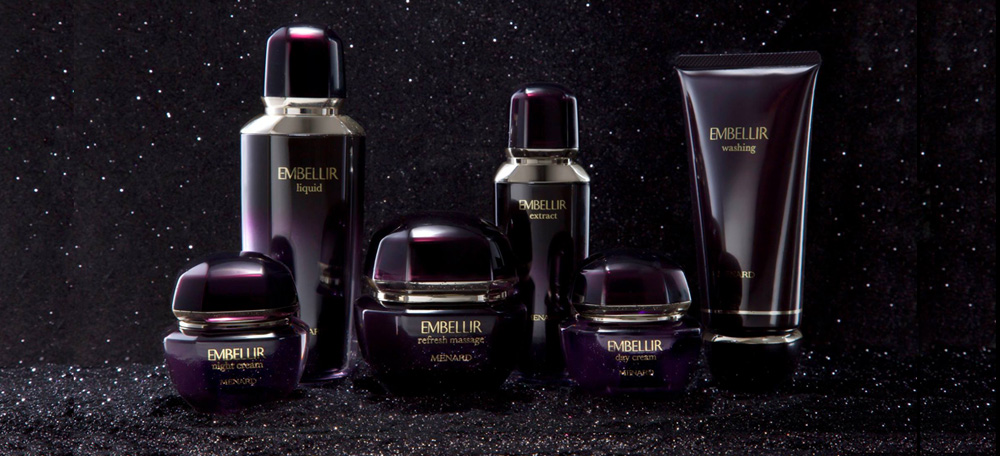
Thermal springs (Japanese: 温泉 – onsen)
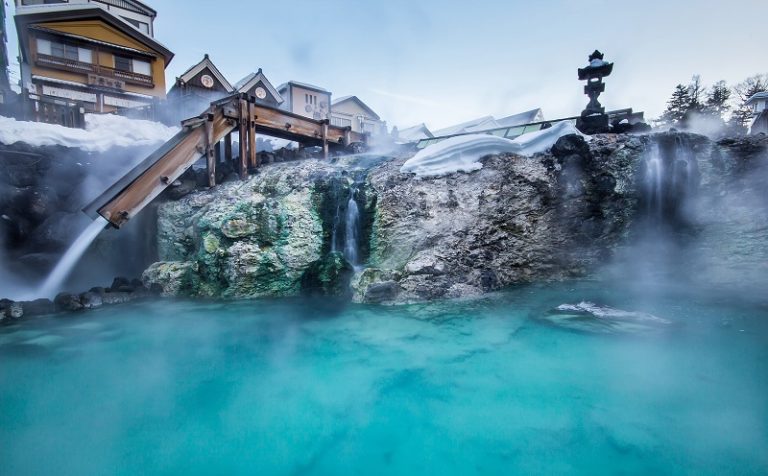
Thermal springs (Japanese: 温泉 – onsen) are an integral part of Japanese culture and rituals for caring for the body and soul. They are formed thanks to Japan’s rich volcanic activity. The country has over 3,000 onsens, each with its own unique water composition, temperature, and healing properties.
Key features of Japanese thermal springs:
• Mineral-rich water: contains sulfur, iron, sodium, calcium, and other elements beneficial for the skin, joints, and overall vitality.
• Health benefits: onsens help with skin conditions, improve circulation, relieve stress and fatigue.
• Purification ritual: before entering the communal bath, it’s customary to shower — a tradition that reflects Japanese values of cleanliness and respect for others.
Famous onsen regions:
• Beppu (Kyushu) – one of the most active and well-known hot spring resorts.
• Hakone – located near Tokyo, popular with both locals and tourists.
• Noboribetsu (Hokkaido) – renowned for its mineral-rich waters.
Cosmetics brand Menard, use thermal spring water in their formulas — in Beauness Line which features water from a special onsen known for its anti-inflammatory and skin-restoring properties.
MIDORI - Greenery Day Celebrations in May (Midori no Hi – May 4th)
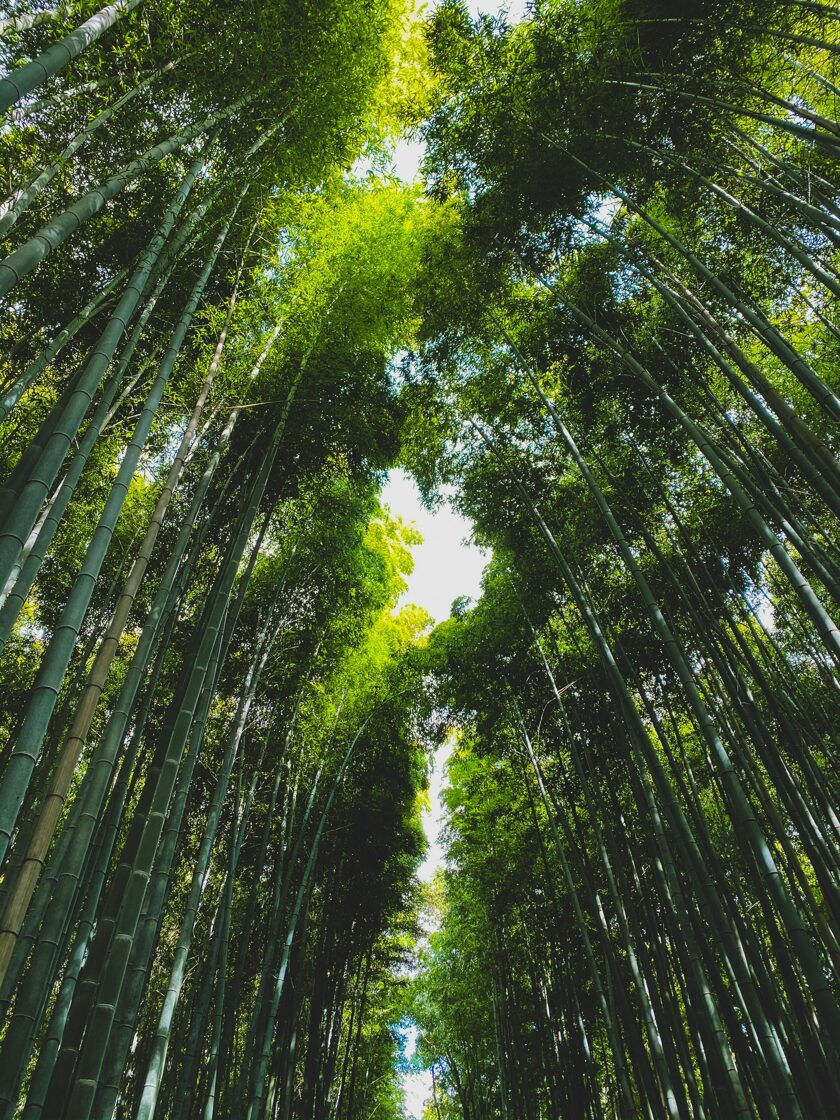 Greenery Day Celebrations in May (Midori no Hi – May 4th)
Greenery Day Celebrations in May (Midori no Hi – May 4th)In Japan, Greenery Day (Midori no Hi) is celebrated on May 4th as part of the Golden Week—a series of national holidays in late April and early May. This day is dedicated to appreciating the beauty of nature, giving thanks for its blessings, and recognizing the importance of environmental protection.
Here’s how Greenery Day is usually celebrated:
1. Nature walks – People go out to parks, gardens, mountains, or the seaside. It’s an ideal day for picnics, relaxing outdoors, and enjoying green landscapes.
2. Free admission to parks and gardens – Many botanical gardens, zoos, and national parks offer free entry or hold special events, including tours and workshops.
3. Tree planting and environmental cleanup – Schools and local communities organize tree-planting activities or environmental clean-up events to honor nature.
4. Educational programs – Lectures, exhibitions, and themed activities are held, especially for children, to teach the importance of nature and ecology.
5. Traditional elements – Although the holiday is relatively modern, in some regions it is blended with local customs, such as rituals of gratitude to nature spirits or trees.
Sakura in Japan

Hanami (花見) - Flower Viewing
• One of the most famous Japanese traditions. People gather in parks and gardens under blooming cherry trees, have picnics, admire the blossoms, and enjoy the company of friends and family.
• Hanami symbolizes the beauty and transience of life, as cherry blossoms only bloom for about a week.
Sakura in art and poetry
• The image of sakura is often used in Japanese poetry (especially in haiku and tanka) as a symbol of the transience of life and beauty.
• In painting, sakura is depicted as the embodiment of sophistication and harmony of nature.
Sakura in clothing and patterns
• Sakura flower patterns are popular in kimonos and yukatas, especially in the spring season.
• Such patterns symbolize youth, new life and purity.
Culinary traditions
• Seasonal dishes are prepared during the cherry blossom season:
• Sakura mochi is a sweet rice dessert wrapped in a salted sakura leaf.
• Sakura tea is green tea with sakura petals, which give the drink a delicate aroma.
• Sakura sake is an alcoholic drink with the addition of sakura petals.
Sakura in the meaning of life and death
• Sakura blossoms are associated with the Buddhist philosophy of mono-no-aware (物の哀れ) - the awareness of the sad beauty of the transience of life.
• In the era of the samurai, sakura symbolized the way of the warrior (bushido) - to live with honor and be prepared for death at any moment.
Maslenica with Japanese style.
Here's the classic recipe:
Ingredients (for 4-6 pancakes)
• Eggs – 2 pcs.
• Milk – 50 ml
• Flour – 60 g
• Baking powder – ½ tsp.
• Sugar – 25 g
• Vanilla extract – ½ tsp. (optional)
• A pinch of salt
• Oil (for frying)
Preparation
1. Separate the eggs into whites and yolks.
2. In a bowl, mix the yolks, milk and vanilla extract. Sift the flour with baking powder and add to the mixture, stir until smooth.
3. In another bowl, beat the egg whites with a pinch of salt. Gradually add sugar, beating until stiff peaks form.
4. Carefully fold the whites into the dough, stirring with a spatula to maintain airiness.
5. Heat a frying pan over low heat and lightly grease with oil.
6. Fry the pancakes under the lid, laying out the dough in slides (you can use a cooking ring for the mold). Cook for 3-4 minutes on each side until golden brown.
7. Serve with honey, berries, whipped cream or maple syrup.
Bon appetit!
バレンタインデー Valentine's Day in Japan

Shirakami mountains

Part of Shirakami Sanchi was registered as a World Natural Heritage Site because it contains "one of the world's largest natural virgin beech forests, almost untouched by human influence".
Baltic Beauty 2024! Kipsala

NEW!!! E - BOOK!
"Is there pumpkin in Japan?"
And here the most interesting thing began!
This story gave me the idea to write a book of pumpkin recipes in Japan!
- Pumpkin in Japan
- Japanese pumpkin art
- Hoku
- 8 recipes
- Japanese fairy tale
- English
- 24 pages

Today is health and sports day in Japan!
3. Your productivity increases
4. Exercising increases the feeling of happiness.

Momiji - hunting for maple leaves
The Japanese are very sensitive to trees - they see them as a source of inspiration, something poetic. Therefore, admiring momiji is of great importance to them. Momiji-gari - translated as hunting for maple leaves - is a very significant and important event for local residents.
Autumn in Japan a magical time!

